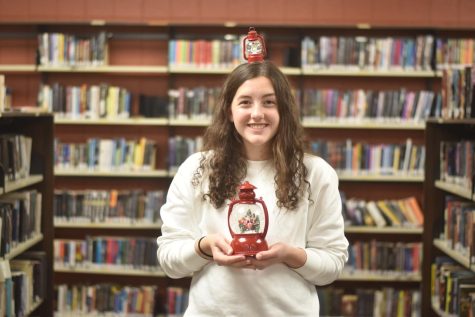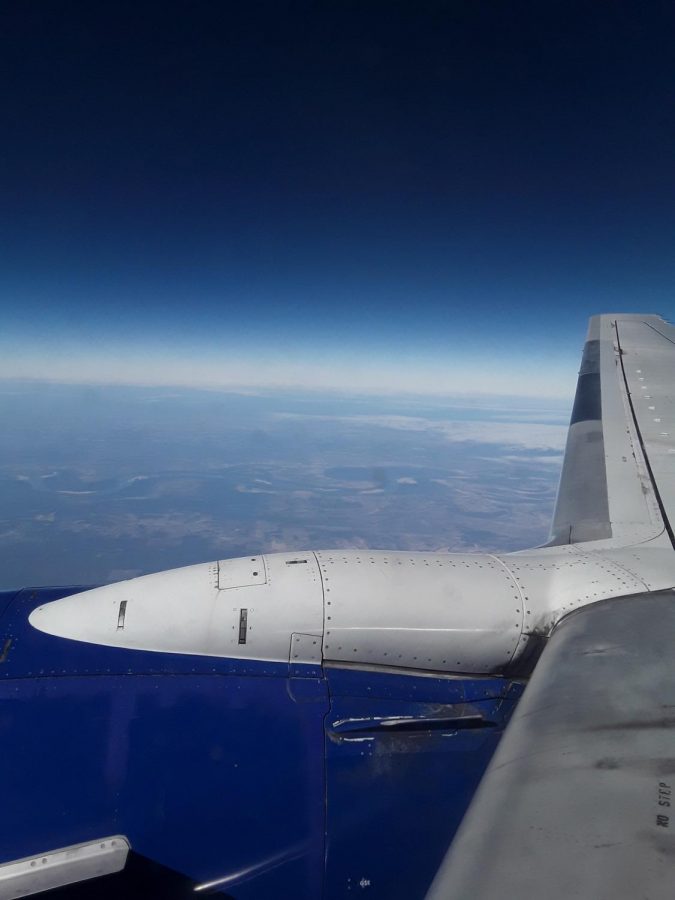Traveling during a pandemic
The coronavirus has drastically changed the process of travelling during the holiday season.
Extra precautions have recently been installed to insure the safety of travelers during the global pandemic.
There are many different things people associate with flying on airplanes. For those with acrophobia, fear. For first-time fliers, excitement. For those who love tradition, little bags of peanuts, and Biscoff cookies. For the young at heart, that weightless sensation when the plane’s wheels have just come off the ground. What is the one thing that no one associates airplanes with? Cleanliness.
Suspiciously fresh-looking gunk under the seats, old food crumbs lining the floor, and crusty seat-back trays are all abundant on most airplanes. Not to mention, a multitude of germs, from runny noses to a hacking cough across the aisle. In the age of coronavirus, all of these things are major no-no’s for holiday travelers. But, this isn’t going to stop most Northerners from seeking the warm beaches of Florida. So, amid a sharp dip in traveling, both for work and fun, airlines have stepped up their cleaning and pandemic safety procedures.
Walking into the Minneapolis-St Paul International Airport on November 20, my family and I were greeted with a few different sights, the most obvious being the masks and social distancing required by COVID protocol. Though very loosely enforced, the airport was covered with “stand here” social distancing stickers and, of course, masks were required. In addition, there were a couple of “PPE vending machines” sprinkled throughout the terminal, as well as hand sanitizing stations. Airport security was also socially distant with masks required. In contrast with pre-coronavirus conditions, fliers didn’t have to take off their shoes. Though shoes won’t exactly protect anyone from coronavirus, not having to take them off did expedite the process, thus reducing contact.
Once at the gate, the coronavirus changes began to increase. While social distancing dots remained, socially distanced seating joined the party, with every other chair blocked off to reduce contact between travelers.
On the plane, however, this social distancing was all for naught. Though the plane wasn’t completely full, not all airlines are big enough to half-fill their flights like Delta. So, travelers would find themselves seated directly next to strangers for the full duration of a two-hour flight. Luckily, the airplane environment was no longer germ stew. Suspicious gunk had been eliminated: floors were clearly freshly vacuumed, and seats were free of sticky globs. There were no magazines or pamphlets in seatbacks, meaning that there were fewer vessels to carry germs from one flight to the next. In addition, no food or drink was served on the flight. So, though some missed their mid-flight ginger ales, most understood the value of reducing contact between crew and commuters, as well as giving passengers fewer opportunities to remove masks.
After getting off the plane, presumably COVID-free, my family and I witnessed some even more creative COVID precautions. At Louis Armstrong New Orleans International Airport, bathroom toilets were equipped with automatically rotating rolls of plastic to give every traveler a fresh seat.
On a shuttle to pick up our rental car, every other seat was once again marked as unusable. When picking up the rental car itself, the driver’s side door had a sticker, marking that it had been through an adequately rigorous cleaning process.
Though today’s conditions scare many away from airline travel, even with the pandemic, some are still traveling to the perfect holiday destination. And, while the danger of coronavirus may have increased, those who are careful have a very low chance of contracting COVID, or even a common cold. So, while airlines can’t stop your next-seat-neighbor from snoring for three straight hours, airlines are flipping the status quo on cleanliness.

Hi Everyone! My name is Lauren Ritz and I'm a senior editor-in-chief for the Lantern. When I'm not editing articles and cooking up graphics, I enjoy playing...

